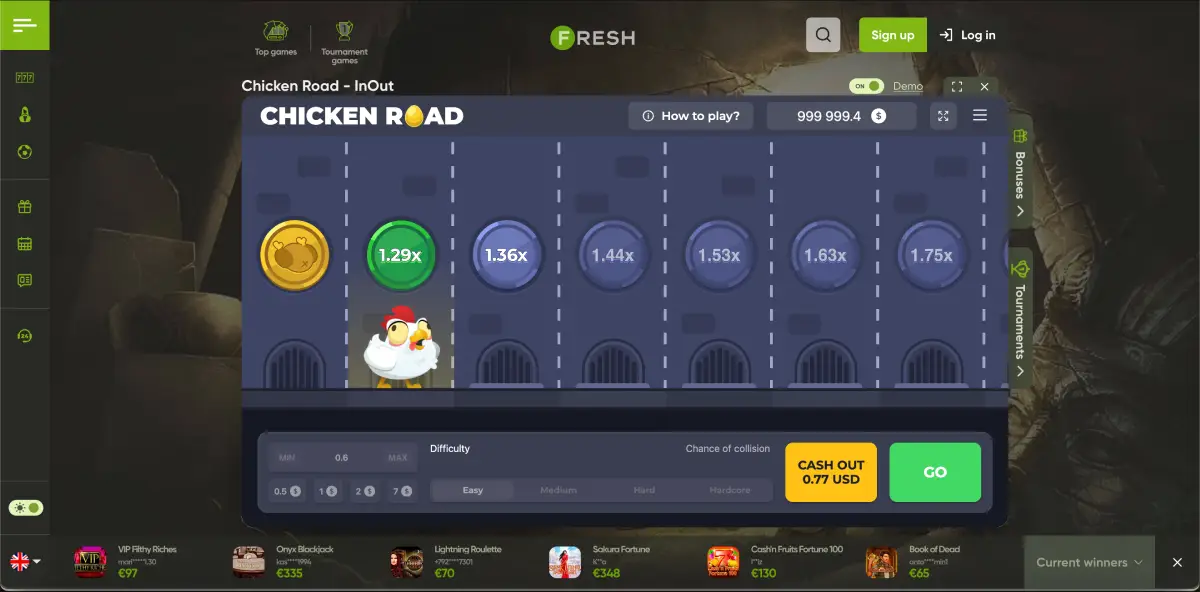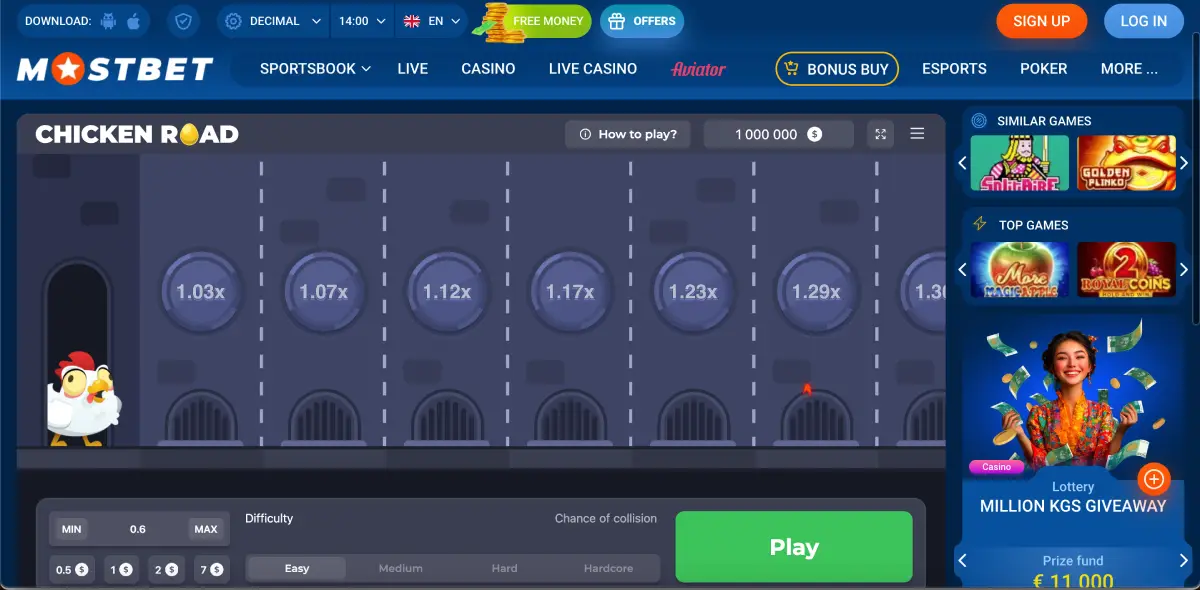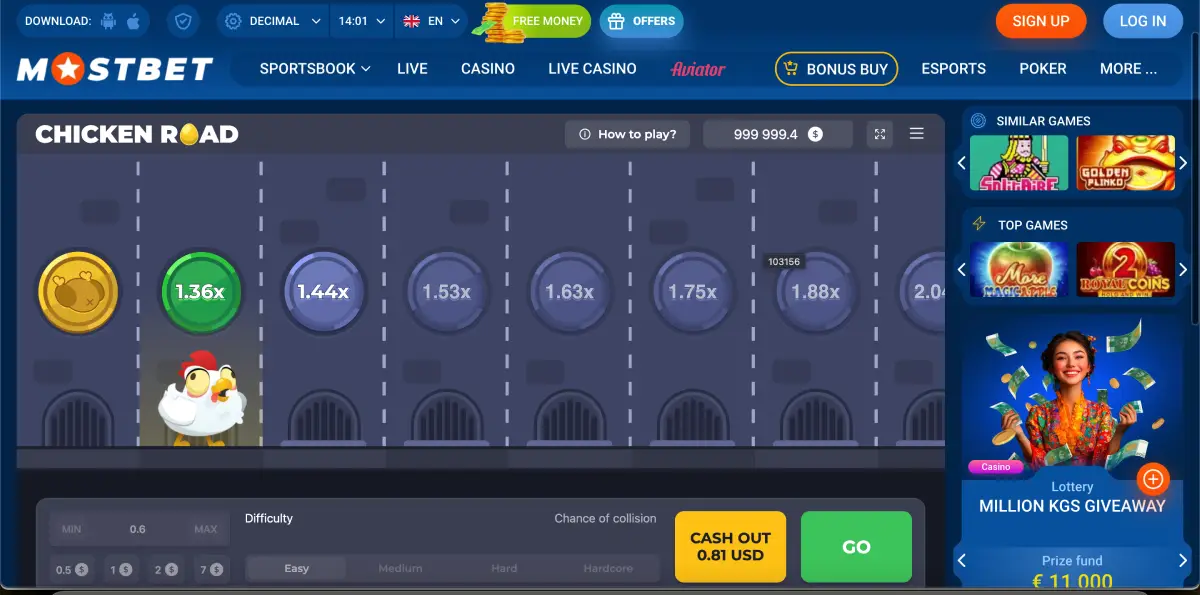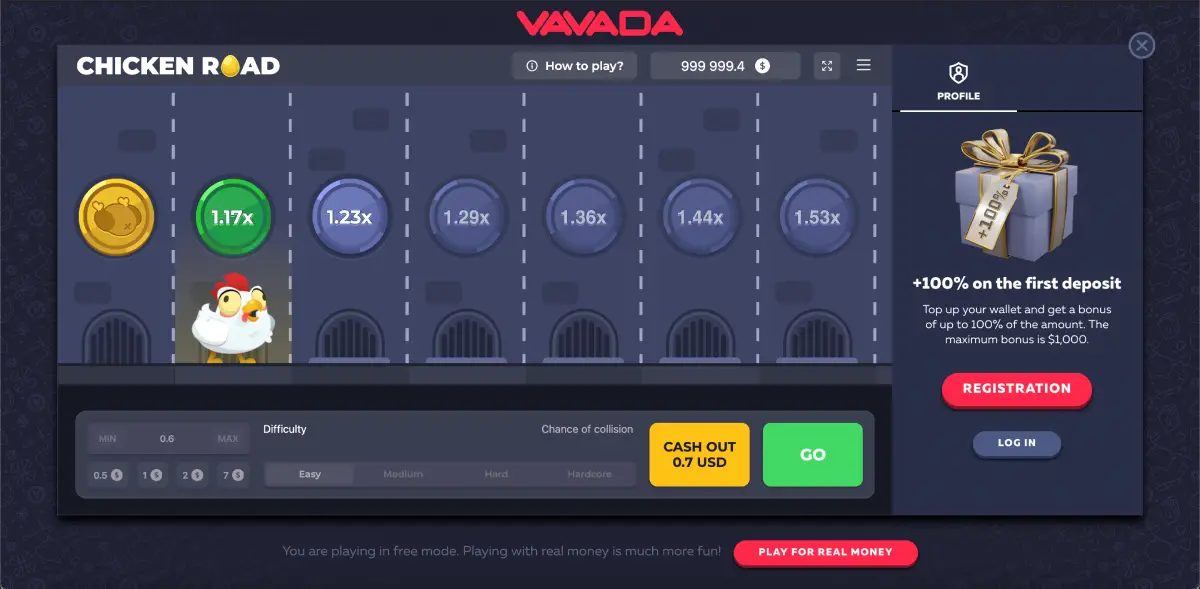Chicken Road might look like a cartoon at first glance, but don’t let the visuals fool you. This is a high-volatility, decision-based gambling game that demands both timing and guts. It’s not just about pressing “Go” and hoping for the best — it’s about knowing when to stop, how far to go, and how to manage your risk based on cold numbers.
Whether you’re approaching it for the first time or looking to develop a consistent Chicken Road strategy, this guide breaks down gameplay mechanics, common mistakes, and advanced tactics that can help increase your chances of walking away with real winnings.

Chicken Road gameplay: what you’re dealing with
In simple terms, the game presents you with a chicken and a fiery road. Every time you hit “Go,” the chicken attempts to cross a new tile. If there’s no fire — you survive, and your multiplier increases. If flames appear — the chicken is cooked, and your winnings are gone. That’s the entire loop.
Unlike auto-based crash games, Chicken Road gives you full control over when to move forward or cash out. This puts the responsibility directly on the player, which also means strategy matters a lot more than in slots or auto-crash mechanics.
Basic gameplay steps
- Set your stake — from $0.01 to $200.
- Choose your risk level: Easy, Medium, Hard, or Hardcore.
- Press Play to start the round.
- Click “Go” to make a step — or “Cash Out” to secure your win.
- If you step into flames, you lose the round and all current winnings.
Difficulty levels explained
| Level | Steps | Starting Multiplier | Max Multiplier | RTP |
|---|---|---|---|---|
| Easy | 24 | x1.02 | x24.5 | 96% |
| Medium | 22 | x1.11 | x2,254 | 88% |
| Hard | 20 | x1.22 | x52,067 | 80% |
| Hardcore | 15 | x1.63 | x3,203,384 | 60% |
Chicken Road: how to win smarter
If you’re asking, Chicken Road how to win, here’s the honest answer: there’s no guaranteed way. The game uses random number generation and a Provably Fair system. However, certain tactics can improve your consistency and reduce big losses over time.
Why Chicken Road needs a strategy
Unlike traditional slots, where your only input is the bet size, Chicken Road involves constant decision-making. You’re in control at every step — not just financially, but strategically. That’s why random clicking doesn’t work here. Without a defined Chicken Road strategy, most players fall into one of two traps: overplaying or cashing out too early.
If you want to maximize sessions, you need a plan — not just luck. Chicken Road rewards consistent behavior more than reckless daring.

Core strategies to consider
1. Short-round strategy (Quick Steps)
Choose Easy or Medium difficulty. Aim for 2–4 successful steps and cash out. You’ll miss out on massive multipliers, but avoid frequent wipeouts. Over time, this can generate small but steady gains.
2. Fixed-step pattern strategy
Set a predefined number of steps to take in every round regardless of outcome. For example: always 3 steps, then cash out. Eliminates emotional decisions and gambling impulses.
3. Risk staircase
Start with Easy. Once you hit profit, step up to Medium or Hard. You only reinvest winnings, keeping your main bankroll protected.
4. Martingale-inspired flat staking
Use fixed-size bets (e.g., $2) and keep them constant through wins and losses. Ideal for short cycles with fast exits after small multipliers.
5. The One-Shot Hardcore
One Hardcore run per session. Stake 1% of your bankroll and accept the risk. This is a bonus round, not a base strategy.
Additional Chicken Road strategies with real examples
Beyond the core approaches, seasoned players often experiment with blended or reactive strategies. Below are four more practical ways to play — each with a risk profile and real-money scenario to illustrate their logic.
6. Reverse Martingale (Paroli)
- Start with $1 stake
- Win → next bet $2 → win → next bet $4
- Lose → reset to $1
Limits losses, amplifies streaks. Best on Easy/Medium, with fixed 3-step exits.
7. Step-Up Stop Strategy
- Round 1: $2 → win → bet $3
- Round 2: $3 → win → bet $4
- Round 3: $4 → lose → reset to $2
Controlled profit growth with automatic stop when loss hits. Keeps hot streaks profitable without overexposure.
8. Conservative Cycle Play
- Bankroll: $100
- Cycle: 10 rounds of $1
- If profit ≥ $10 or loss ≥ $5 → end session
Stable, defensive play. Avoids tilting, protects capital.
9. Two-Win Exit Plan
- Round 1: Bet $2 → x2.5 → $5 → cash out
- Round 2: Bet $2 → x1.7 → $3.4 → cash out
- Session ends. Profit: $4.4
Simple, disciplined. Shuts down “one more round” thinking.
How to manage risk in Chicken Road
Winning isn’t just about clicking at the right time — it’s about managing the mental game. Most players lose not because of fire, but because of greed. Here are tips that align with any Chicken Road strategy:
- Set a stop-loss before you start playing — and respect it.
- Use Cash Out more often than you think. You’ll thank yourself later.
- Don’t raise stakes after losing rounds — this isn’t roulette.
- Mix your difficulty levels based on session progress.
- Stick to a fixed session length — don’t “chase the fire.”
Mistakes to avoid in Chicken Road
- Chasing max multipliers: Hardcore wins happen, but rarely. Going for x3 million every round will wipe you out.
- All-in betting: Don’t ever stake your full balance. Use 1–5% of your bankroll per round.
- No exit plan: If you don’t know when to stop, you’ll keep going until fire eats your winnings.
- Emotional rounds: Don’t re-enter right after a burn. Take a break, switch modes, or reduce stake.

Chicken Road: legit or just hype?
Many players wonder: is Chicken Road legit? Yes — the game is developed by InOut Games, operates under a Curacao license, and uses Provably Fair tech. Each tile’s outcome is generated independently, and results can be verified through the platform.
There are no secret scripts, no “house edge cheats.” What you see is what you get — a high-stakes decision-making arcade that rewards control and timing, not button-mashing. The only real enemy here is impatience.
Final thoughts: smart play wins more
Chicken Road isn’t a slot you can spin on autopilot. It’s a mini-crash game with humor, high tension, and an unforgiving design. If you want to last longer and win more — treat it like a strategy game, not a gamble.
Use flat bets. Mix difficulty levels. Cash out when the profit feels good — not when it looks huge. And above all, don’t chase a fried chicken dream if your bankroll is already smoking.

Example: smart play vs. greedy play
Session A: Player bets $5 on Easy, takes 4 steps → x2.8 → $14. Next round, same bet → 3 steps → x2.1 → $10.5. Total session profit = $9.5. Player stops.
Session B: Same start. First round: $5 → 5 steps → x3.5 → $17.5. Second round: gets greedy, plays Hardcore, gets burned on first step. Loss = $17.5. Ends session negative.
The lesson? Chicken Road how to win isn’t about big wins — it’s about not giving them back.
Chicken Road gives you control — the rest is up to you.
